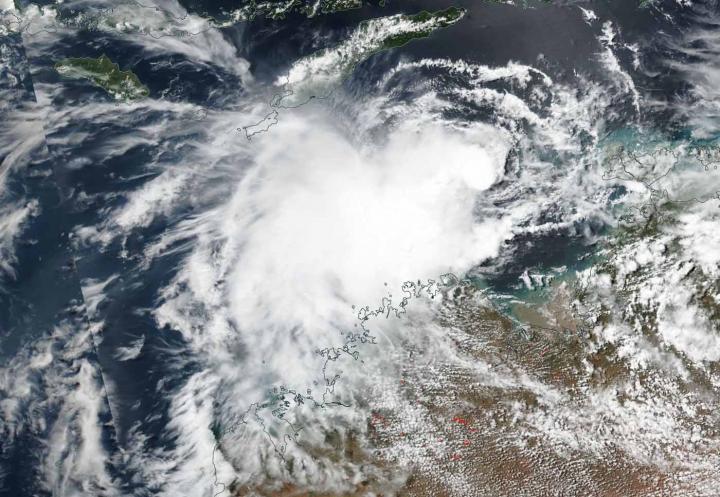
Credit: Credit: NASA Worldview, Earth Observing System Data and Information System (EOSDIS).
Tropical Cyclone 23S has developed north of the Kimberley coast, and generated warnings. NASA-NOAA’s Suomi NPP satellite passed overhead as the low pressure area consolidated into a tropical cyclone.
23S is expected to be renamed Tropical Storm Wallace as it falls in Australia’s area of responsibility, and follows their naming list.
The Australian Bureau of Meteorology or ABM posted warnings from Kalumburu to Beagle Bay, not including Derby.
NASA-NOAA’s Suomi NPP satellite passed over 23S on April 5 and the Visible Infrared Imaging Radiometer Suite (VIIRS) instrument provided a visible image of the storm. The VIIRS image showed an elongated storm. The southeastern quadrant of 23S was over the Kimberly coast. The Joint Typhoon Warning Center or JTWC noted “animated multispectral satellite imagery which depicts isolated, deep central convection and shallow rain bands.”
JTWC stated at 5 a.m. EDT (0900 UTC) that 23S was located near 12.0 south latitude and 127.4 east longitude, about 207 nautical miles (238 miles/383 km) west of Darwin, Australia. 23S was moving to the west-southwest and had maximum sustained winds near 35 knots (40 mph/65 kph), making it tropical-storm force.
Tropical Storm 23S is forecast to move west-southwest while intensifying over the next four days as it moves parallel to the coast of Western Australia. The ABM noted “there remains a slight risk that the cyclone could approach the west Pilbara coast next week.”
###
For updated forecasts, visit the ABM website: http://www.
Media Contact
Rob Gutro
[email protected]
Original Source
https:/



